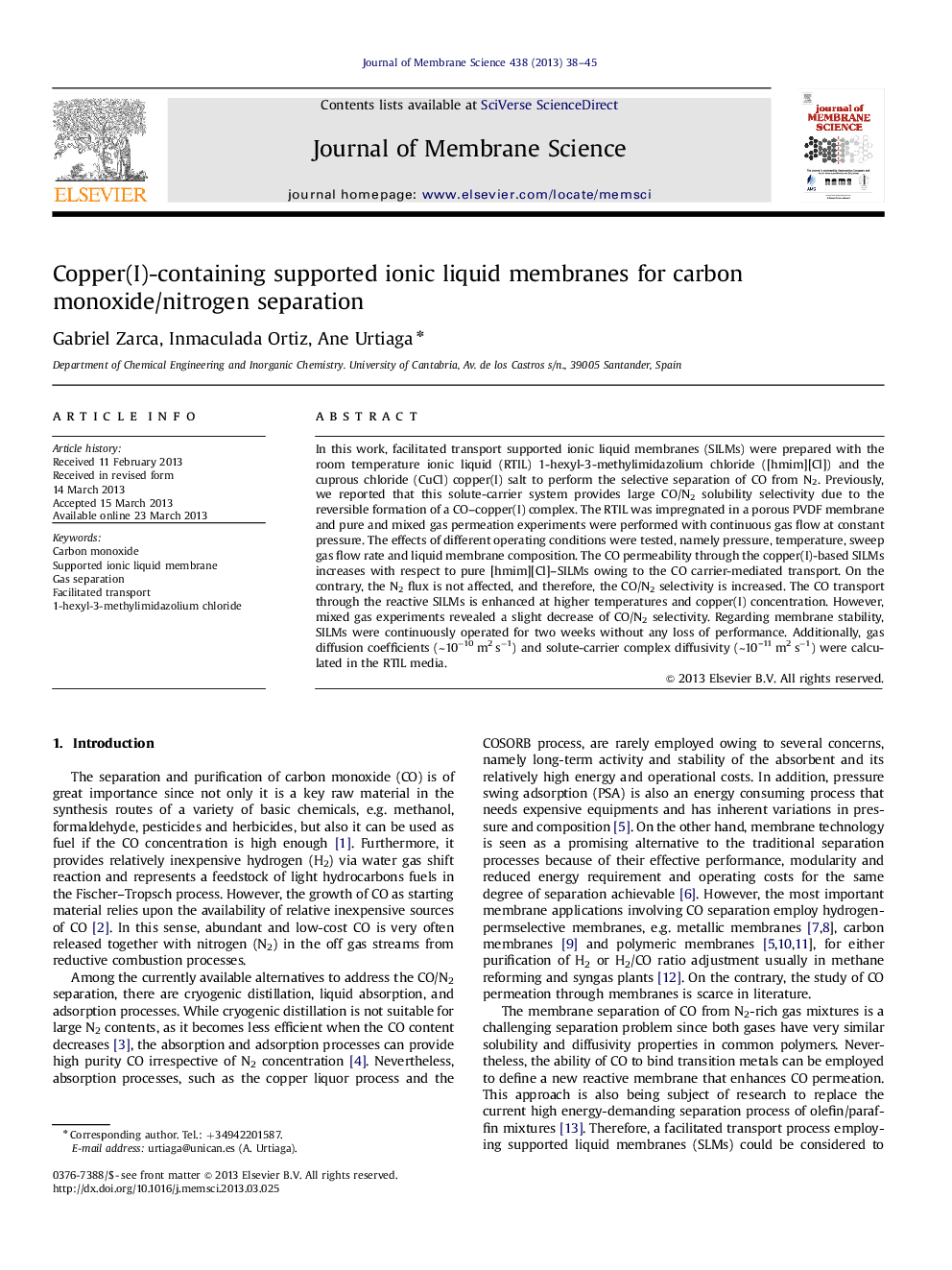| Article ID | Journal | Published Year | Pages | File Type |
|---|---|---|---|---|
| 634356 | Journal of Membrane Science | 2013 | 8 Pages |
•SILMs were prepared with CuCl and [hmim][Cl] for CO/N2 separation.•Enhanced CO permeability and CO/N2 selectivity was obtained after CuCl addition.•CO and N2 diffusion coefficients through [CuCl]/[hmim][Cl]-RTILs have been obtained.•Improved SILM stability over traditional liquid membranes for gas separation.
In this work, facilitated transport supported ionic liquid membranes (SILMs) were prepared with the room temperature ionic liquid (RTIL) 1-hexyl-3-methylimidazolium chloride ([hmim][Cl]) and the cuprous chloride (CuCl) copper(I) salt to perform the selective separation of CO from N2. Previously, we reported that this solute-carrier system provides large CO/N2 solubility selectivity due to the reversible formation of a CO–copper(I) complex. The RTIL was impregnated in a porous PVDF membrane and pure and mixed gas permeation experiments were performed with continuous gas flow at constant pressure. The effects of different operating conditions were tested, namely pressure, temperature, sweep gas flow rate and liquid membrane composition. The CO permeability through the copper(I)-based SILMs increases with respect to pure [hmim][Cl]–SILMs owing to the CO carrier-mediated transport. On the contrary, the N2 flux is not affected, and therefore, the CO/N2 selectivity is increased. The CO transport through the reactive SILMs is enhanced at higher temperatures and copper(I) concentration. However, mixed gas experiments revealed a slight decrease of CO/N2 selectivity. Regarding membrane stability, SILMs were continuously operated for two weeks without any loss of performance. Additionally, gas diffusion coefficients (~10−10 m2 s−1) and solute-carrier complex diffusivity (~10–11 m2 s−1) were calculated in the RTIL media.
Graphical abstractFigure optionsDownload full-size imageDownload high-quality image (179 K)Download as PowerPoint slide
